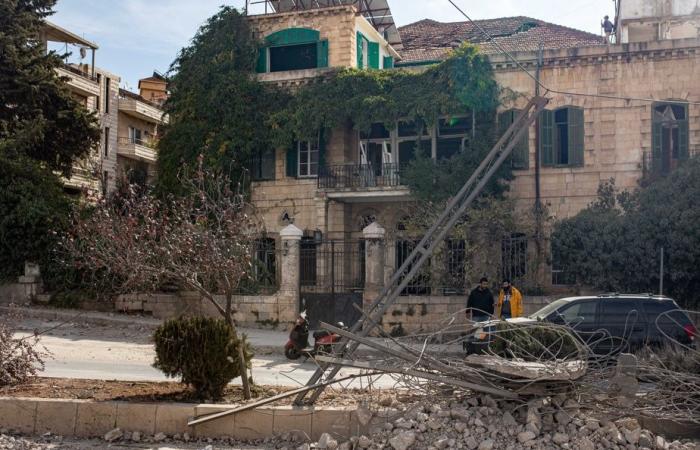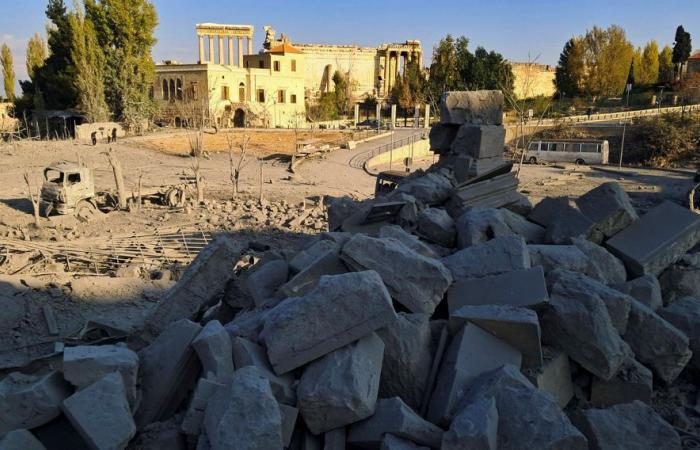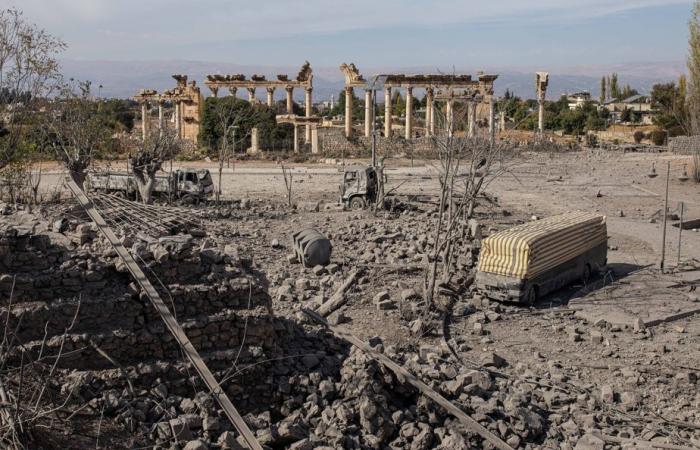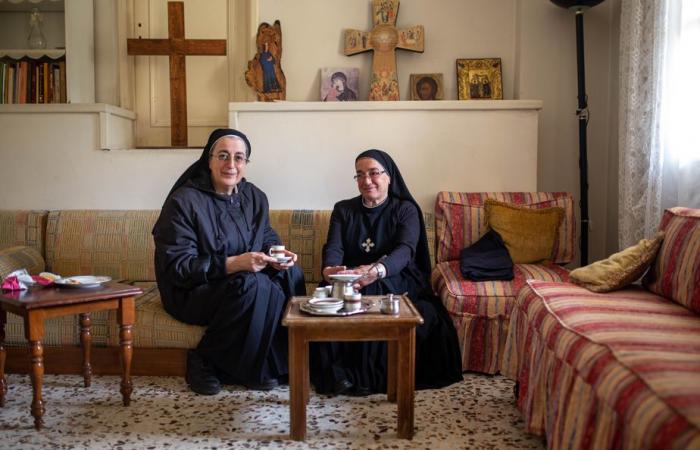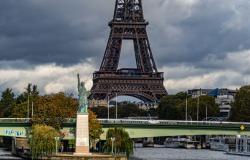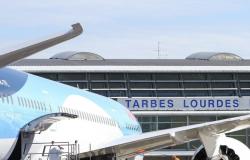(Baalbek) This is one of the most emblematic hotels in Lebanon. In 150 years of existence, the Palmyra hotel in Baalbek has seen the greatest names come and go: from Lawrence of Arabia to Charles de Gaulle, including Nina Simone, Jean Cocteau and Ella Fitzgerald. All seduced by its architecture, its ancient sculptures, its Persian carpets and, of course, its breathtaking view of the ancient ruins of the city.
Published at 6:00 a.m.
Hugo Lautissier
Special collaboration
On this November morning, the view has nothing to envy of an apocalyptic film. An Israeli air strike took place a few days earlier, on November 6, on the parking lot of the archaeological site composed of three Roman temples dedicated to Jupiter, Venus and Bacchus, the latter known as one of the best preserved temples in the Greco-Roman world. We still find charred carcasses of trucks and cars, covered in ash.
“I have been working here for 56 years. I never thought such a thing could happen,” says the concierge of the Palmyra hotel, Abou Ali, an elderly man with a graying mustache, dressed in a white work coat.
The legendary Menchiyé building, built in 1928 in an Ottoman style, is nothing more than a pile of rubble. Behind the parking lot, the intact columns of the Boustan Al-Khan odeon stand out in this end-of-the-world atmosphere.
PHOTO MAHER ABOU TALEB, ARCHIVES REUTERS
Rubble of the Menshiye building in eastern Baalbek, destroyed by an Israeli strike earlier this month
The security situation in Baalbek deteriorated at the end of October, when the Israeli army called on all residents to leave this Shiite-dominated town, known as an important Hezbollah stronghold.
“It is estimated that 60 to 70% of the 80,000 inhabitants of Baalbek have evacuated the city,” explains the governor of the region, Bachir Kodhr, in an interview. This week alone, there have been 50 strikes on Baalbek and surrounding villages, killing 45 people. As I speak to you, I have just learned that there have been new strikes in Knesse and Hadass, at least five dead. »
The Baalbek site is a source of pride for the Lebanese. He saw the Phoenicians, the Romans, the Greeks and the Mamluks pass by. This is our heritage, we must protect it at all costs […]. It’s as if the Israelis are trying to erase our collective memory.
Bachir Kodhr, governor of the region
In a petition addressed to UNESCO, 300 cultural professionals, including archaeologists and academics, called on Sunday the institution to “implement all means” to “protect these irreplaceable treasures” of Lebanese heritage on the eve of a crucial meeting at the Paris headquarters of the UN agency.
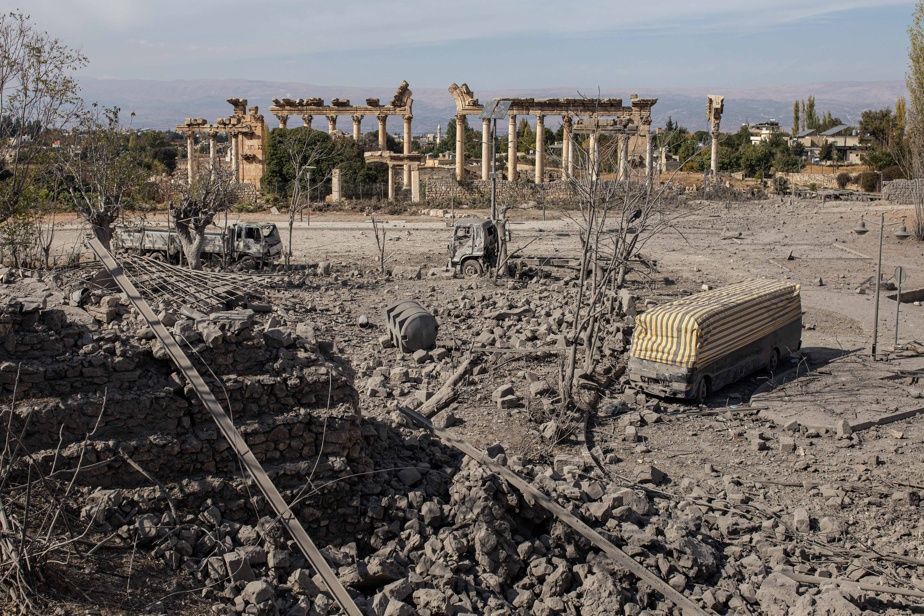
PHOTO HUGO LAUTISSIER, SPECIAL COLLABORATION
The parking lot of the ancient site of Baalbek was bombed by Israeli aircraft.
Because in addition to Baalbek, several other sites are threatened. In Tyre, a Phoenician city which is home to important Roman remains and medieval buildings dating from the Crusades, bombings targeted buildings located a few hundred meters from the Roman ruins.
In October, Israeli strikes destroyed an entire wall of a fortress built in the 12th centurye century, in Tebnine, near Bint Jbeil, in the south of the country. Others have targeted a 400-year-old souk in Nabatiyé, one of the oldest in the country, whose origins date back to the Ottoman and Mamluk eras.
Broken windows and deserted streets
A few dozen meters from the Roman temples, the cobbled streets of the city center also bear the scars of the last days. In this predominantly Christian neighborhood, we did not expect to become a target of the Israeli air force, the bombings having until then been concentrated on the Shiite suburbs of the city. In recent weeks, the neighborhood had even become a refuge for this population.
“When there was the order to evacuate the city, everyone rushed here. People left with nothing, they wandered in the streets,” summarizes Sister Mélanie Tannoury, nun of the congregation of the Sisters of Notre-Dame du Bon Service, which welcomes up to 200 displaced people in the convent.

PHOTO HUGO LAUTISSIER, SPECIAL COLLABORATION
Sister Hoda and Sister Mélanie Tannoury have coffee in the convent of the congregation of the Sisters of Notre-Dame du Bon Service. Since the start of the war, they have been helping displaced people despite the risks.
In the neighboring school, the Collège des Sœurs des Saints Cœurs, which accommodates dozens of displaced people, the windows were blown out by the explosion. Further on, adjacent to the ancient ruins, there are two Orthodox and Maronite churches which suffered damage to the roof, woodwork and glazing.
“Now we have had our share too. No one is safe anymore. It’s an additional shock for the displaced, and we know that it’s not over yet,” summarizes Sister Hoda Tannoury with a sad smile.
The two biological sisters still find the strength to joke and help the displaced. The first weeks, they were alone in managing the sleeping and eating of around twenty people, before associations came to their aid. “We’re not leaving here. As long as there are people in need, we cannot leave them,” promises Sister Hoda.
With Agence France-Presse

